Maackiain Ameliorates 6-Hydroxydopamine and SNCA Pathologies by Modulating the PINK1/Parkin Pathway in Models of Parkinson's Disease in Caenorhabditis elegans and the SH-SY5Y Cell Line
- PMID: 32585871
- PMCID: PMC7352553
- DOI: 10.3390/ijms21124455
Maackiain Ameliorates 6-Hydroxydopamine and SNCA Pathologies by Modulating the PINK1/Parkin Pathway in Models of Parkinson's Disease in Caenorhabditis elegans and the SH-SY5Y Cell Line
Abstract
The movement disorder Parkinson's disease (PD) is the second most frequently diagnosed neurodegenerative disease, and is associated with aging, the environment, and genetic factors. The intracellular aggregation of α-synuclein and the loss of dopaminergic neurons in the substantia nigra pars compacta are the pathological hallmark of PD. At present, there is no successful treatment for PD. Maackiain (MK) is a flavonoid extracted from dried roots of Sophora flavescens Aiton. MK has emerged as a novel agent for PD treatment that acts by inhibiting monoamine oxidase B. In this study, we assessed the neuroprotective potential of MK in Caenorhabditis elegans and investigated possible mechanism of this neuroprotection in the human SH-SY5Y cell line. We found that MK significantly reduced dopaminergic neuron damage in 6-hydroxydopamine (6-OHDA)-exposed worms of the BZ555 strain, with corresponding improvements in food-sensing behavior and life-span. In transgenic worms of strain NL5901 treated with 0.25 mM MK, the accumulation of α-synuclein was diminished by 27% (p < 0.01) compared with that in untreated worms. Moreover, in worms and the SH-SY5Y cell line, we confirmed that the mechanism of MK-mediated protection against PD pathology may include blocking apoptosis, enhancing the ubiquitin-proteasome system, and augmenting autophagy by increasing PINK1/parkin expression. The use of small interfering RNA to downregulate parkin expression in vivo and in vitro could reverse the benefits of MK in PD models. MK may have considerable therapeutic applications in PD.
Keywords: 6-Hydroxydopamine; Caenorhabditis elegans; Parkinson’s disease; SH-SY5Y cell; apoptosis; autophagy; maackiain; parkin; proteasome; α-Synuclein.
Conflict of interest statement
The authors declare no conflict of interest.
Figures


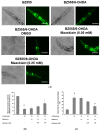

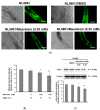




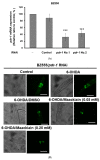


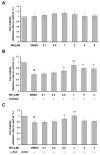
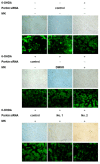





Similar articles
-
Peiminine Reduces ARTS-Mediated Degradation of XIAP by Modulating the PINK1/Parkin Pathway to Ameliorate 6-Hydroxydopamine Toxicity and α-Synuclein Accumulation in Parkinson's Disease Models In Vivo and In Vitro.Int J Mol Sci. 2021 Sep 23;22(19):10240. doi: 10.3390/ijms221910240. Int J Mol Sci. 2021. PMID: 34638579 Free PMC article.
-
Carpesii fructus extract exhibits neuroprotective effects in cellular and Caenorhabditis elegans models of Parkinson's disease.CNS Neurosci Ther. 2024 Apr;30(4):e14515. doi: 10.1111/cns.14515. Epub 2023 Oct 31. CNS Neurosci Ther. 2024. PMID: 37905594 Free PMC article.
-
Hederagenin inhibits mitochondrial damage in Parkinson's disease via mitophagy induction.Free Radic Biol Med. 2024 Nov 1;224:740-756. doi: 10.1016/j.freeradbiomed.2024.09.030. Epub 2024 Sep 21. Free Radic Biol Med. 2024. PMID: 39313012
-
Impaired mitochondrial dynamics and function in the pathogenesis of Parkinson's disease.Exp Neurol. 2009 Aug;218(2):235-46. doi: 10.1016/j.expneurol.2009.03.006. Epub 2009 Mar 18. Exp Neurol. 2009. PMID: 19303005 Review.
-
[Autophagy pathways and key drug targets in Parkinson's disease].Yao Xue Xue Bao. 2016 Jan;51(1):9-17. Yao Xue Xue Bao. 2016. PMID: 27405155 Review. Chinese.
Cited by
-
Autophagy and apoptosis cascade: which is more prominent in neuronal death?Cell Mol Life Sci. 2021 Dec;78(24):8001-8047. doi: 10.1007/s00018-021-04004-4. Epub 2021 Nov 6. Cell Mol Life Sci. 2021. PMID: 34741624 Free PMC article. Review.
-
Neurorescue Effects of Frondoside A and Ginsenoside Rg3 in C. elegans Model of Parkinson's Disease.Molecules. 2021 Aug 10;26(16):4843. doi: 10.3390/molecules26164843. Molecules. 2021. PMID: 34443430 Free PMC article.
-
Neurogrit Gold Attenuates 6-OHDA-Induced Dopaminergic Neurodegeneration in Parkinson's Model of Caenorhabditis elegans by Reducing α-Synuclein Accumulation and Pink/Pdr-1 Driven Mitochondrial Dysfunction.CNS Neurosci Ther. 2025 May;31(5):e70401. doi: 10.1111/cns.70401. CNS Neurosci Ther. 2025. PMID: 40342222 Free PMC article.
-
Maackiain Modulates miR-374a/GADD45A Axis to Inhibit Triple-Negative Breast Cancer Initiation and Progression.Front Pharmacol. 2022 Mar 4;13:806869. doi: 10.3389/fphar.2022.806869. eCollection 2022. Front Pharmacol. 2022. PMID: 35308218 Free PMC article.
-
Maackiain Protects the Kidneys of Type 2 Diabetic Rats via Modulating the Nrf2/HO-1 and TLR4/NF-κB/Caspase-3 Pathways.Drug Des Devel Ther. 2021 Oct 14;15:4339-4358. doi: 10.2147/DDDT.S326975. eCollection 2021. Drug Des Devel Ther. 2021. PMID: 34703210 Free PMC article.
References
-
- Calabrese V., Santoro A., Monti D., Crupi R., Di Paola R., Latteri S., Cuzzocrea S., Zappia M., Giordano J., Calabrese E.J., et al. Aging and Parkinson’s Disease: Inflammaging, neuroinflammation and biological remodeling as key factors in pathogenesis. Free. Radic. Biol. Med. 2018;115:80–91. doi: 10.1016/j.freeradbiomed.2017.10.379. - DOI - PubMed
-
- Bouca-Machado R., Duarte G.S., Patriarca M., Castro Caldas A., Alarcao J., Fernandes R.M., Mestre T.A., Matias R., Ferreira J.J. Measurement Instruments to Assess Functional Mobility in Parkinson’s Disease: A Systematic Review. Mov. Disord. Clin. Pract. 2020;7:129–139. doi: 10.1002/mdc3.12874. - DOI - PMC - PubMed
MeSH terms
Substances
Grants and funding
LinkOut - more resources
Full Text Sources
Medical
Miscellaneous

